La freccia e il cerchio
anno 4, numero 4, 2013
pp. 281-283
Fabio Pusterla
Mirror, masks, basements
1.
No, our house was certainly not a luxury. But full of mirrors, yes.
Furniture made to last a lifetime, purchased many years earlier at Cantù, as was the custom: a pétinoire in the bedroom, and on the other wall a chest of drawers, both topped by mirrors, and along the wall, between one and the other, a large wardrobe with four doors, all made of mirrors. By opening this one or that one, and placing it in a certain way, one could see oneself also from behind, and that was not always a pleasant sight: how pants were falling, say, the effect of a jacket, the whole series of worried checks only creating insecurity. Because the mirrors interrogated answer mercilessly, and if the question is riddled with anxiety they throw back at you a greater and clearer anxiety. And who can look at a mirror without anxiety, at fifteen or sixteen?
But the most important of all, the most everyday of all, it must be said, was the almost rectangular mirror placed above the sideboard in the dining room: in front of the table where we used to eat every day and every night, for years, above the decorated wooden doors of the cupboard, with a squirrel and a gibbon carved on one side, an eagle and maybe a deer on the other, slightly jutting out along the cherry tree axis. In front of the table, it must be immediately added, however, by accident or by force: that piece of furniture and its companions should in fact have needed more spacious room, far greater distances, for which they were designed and sold. But life was so, and so was the money, and the space of the dining room was the little that it was: a box of walls that could contain a table, increasingly shaky over the years but still impressive in its own way, with a green crystal top, unfortunately flawed because of some ancient family accident (a jug dropped? A fiery fist? who knows), high-backed squeaking chairs, the television set on wheels, with the lowest shelf for the old radio in dark wood and with large knobs as an involuntary little monument to postwar technological development, a small greenish Ottoman, and the sideboard, finally, against the wall, topped by the dizzy wonder of the mirror, as an additional light that perhaps opened our world, or perhaps enclosed it, making it even more narrow and hopeless like a photocopy.
So: we would be sitting in front of a meal or a snack, and in one way or another it was the mirror to get hold of the situation. Some turned their backs to it, of course; and then the others, who were instead before their own image, could only see the neck and shoulders of that person, which sometimes blocked the image; and it might happen that the dialogues, or rather the direction of the eyes during the dialogues, were influenced and complicated by the mirror in the background. Talking to someone who’s looking at us, and who’s turning their back to the mirror in which we see ourselves – this is not always easy. We’re looking at him or her, we respond to his or her look, and at the same time we are distracted by and attracted to our look and our image, our mouth moving while we’re saying that certain thing answering to his, but still watching ourselves and forcing ourselves constantly to a kind of rigorous examination, looking for the best position, the most effective smile, the seductive gesture; and then the dialogue is likely to become a dress rehearsal for something that may never occur, since the mirror appropriates every manifestation of ourselves, and turns us instantly into a show and in its public: the public and the show of ourselves as we speak or remain silent, constant simulation, a little mask of emptiness.
[…]
